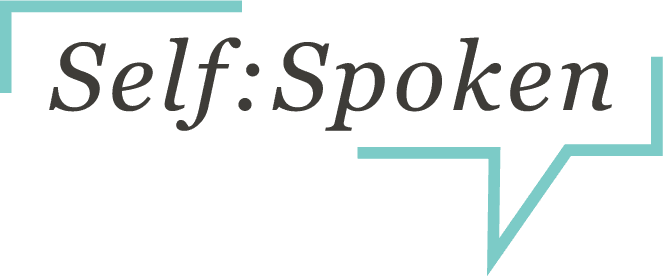Welcome to January’s three-part series, where we’re covering the best way to approach the 3 most common questions you’ll face when pitching yourself—whether you’re presenting to stakeholders or asking for a raise.

Since this month is the height of interview season, this series is geared towards the interview process. But don’t worry, ALL of these skills are transferable to any situation where you feel like you need to pitch or prove yourself.
Some quick links for ya: Part 1 👉 Part 2 👉 Part 3
Let’s be honest. Pitching yourself gets such a weird, bad rap.
In our culture, you’re either a:
🤥 phony bologna laying it on too thick
🥺 relatable person who can’t quite convey your expertise “with authority”
🥴 OR you’re all over the place and it’s hard to pinpoint what you do or why you do it.
There’s so much pressure (and potential judgment!) when it comes to making a “good impression.”
Tell me: even if you’re a veteran in your field, does a question like “tell me about your background” or “how did you get into this work” ever throw you into squirmy, “uhh-where-do-I-begin” territory?
Because if so, you’re not alone!
Real talk?
Chances are, you’ve gotten so sucked into the day-to-day minutiae that you’ve become a little blind to your own big picture…i.e., how to tell your story and articulate your expertise….
And that’s understandable—you’ve been too busy kicking ass and taking names on the daily to zoom out for a larger perspective.
But let me tell ya something…
When you mine for the stories that demonstrate what you’ve overcome, or how you’ve been an asset to your team, you gain clarity on the arc of your own journey and what really lights you up.
So let’s break down how to answer any flavor of the dreaded question that ALWAYS comes up first when you’re interviewing or pitching yourself…
1. “Tell me about yourself…”
First, organize your message into buckets.
Buckets are the best way to determine your key points and messages so you have a deep well to pull from and are less tethered to a memorized script.
The four most important buckets for this question are:
- Who are you? (as in, how would the people closest to you describe you?)
- What are you up to now?
- What’s your background?
- And where are you going/what are you looking for next?
✍️ Take five minutes to jot down ideas for each of these buckets to give yourself a wealth of content to pull from in the moment.
Another way to think about this is: start in the middle and go both ways.
Check out this audio clip from a recent coaching session, where I break down this technique and demonstrate how I apply it to my own introduction:
[Note: if I were coaching myself on my delivery of this intro, I’d tell myself to slow it way down and share it with enthusiasm! But, hopefully you get the sense of how starting in the middle and going both ways grounds my messaging and helps shape it into more of a narrative than a report.]
Now, it’s your turn! What would your one-minute slingshot introduction sound like? Start in the middle and go both ways…
Then, once you have that down, you can always adapt your professional introduction using the accordion method depending on how much time you have. It’ll help you convey your message quickly and coherently, while painting an authentic and nuanced picture of who you are and the work you’ve done.
Whether you’re already planning a career leap, or you’re starting to consider what growth in 2021 could look like for you…
One question you can definitely anticipate is:
2. “Why are you leaving your current job? And/or… what are you looking for next?”
For this question, you want to speak to what you’re looking for in an ideal work environment and career path, then either name why the job you’re interviewing for fits that bill OR the criteria for an environment that would fit that bill.

This is your chance to show how you’ve met your growth threshold at your previous position, what you bring to the table, and how you hope to contribute to a new work environment.
Here are two fill-in-the-blank prompts to get you started on shaping your response to this question:
- When I started my current role, I was tasked with [insert responsibilities and challenges], and now that I’ve [insert accomplishments or skills you’ve gained], I feel like I’ve met my growth threshold there and I’m looking to [insert WHY this new role is the ideal growth opportunity and what you hope to contribute] …
- I’m looking to flex my [insert specific skill(s)] and bring my experience with [insert problems you’d be expected to solve] to a culture that really values… [insert organizational values that are most important to you and to them]…
✍️ Take five minutes to write down ideas for each of these prompts. Focus on capturing specific examples, don’t worry about memorizing your answers!
Ok, now this third question might be the most dreaded one. It can feel like a game in a way, when the person across the table (or on the other side of the screen) looks you in the eye and says…
3. “What would you say are some of your strengths and weaknesses?”
You want to be able to inspire others with your story, but also strike that balance between coming across as a pro and staying true to the real, imperfect human being you are.

For your strengths: not only do you need to name what you’re excellent at… but more specifically give examples that highlight HOW you’ve leveraged that strength.
Bottom line here: don’t just tell us you’re “detail-oriented” or you’re “excellent at staying calm under pressure”… give us examples to back those strengths up.
For example, if one of your strengths is that you can simultaneously see the big picture and get in the weeds when you need to… tell us a story about a time you leaned into that skill.
Or, if you’re a people person and can adapt to any situation and make people feel comfortable in tense situations, tell us about a time you did just that.
The key to naming your strengths in a way that really lands is to tell the stories that back those strengths up.
As for your weaknesses?
It’s tempting to follow the cliché advice to turn a strength on its head by saying, “I’m just such a perfectionist!” or “I hate being late, so I’m always early!”…
But here’s the thing: everyone can smell that B.S. from a mile away. Plus, when you evade this question with a sneaky answer, you miss out on a great opportunity to show how self-aware you are!
So how to nail this one? Center your weakness around how you’ve acted outside of your best self in the past, and how you’ve grown since.
Example: I consider myself an assertive person, someone who goes after what they want. But sometimes when I don’t know what I want… I have a hard time sitting with that ambiguity. So I’m working on exploring that vulnerability and not rushing to make a decision before I know it’s the right decision.
✍️ Take a few minutes to brainstorm your strengths and weaknesses, then come up with at least one highly specific example or story to illustrate each one.
The best part? The more grounded you are in your talking points for these tried-and-true q’s, the more self aware you’ll be, and the more prepared for any less-common questions they throw at ya.
Looking for more ways to up your “pitching yourself” skills?
I wanna help! Click here to grab your copy of my Presence Playbook, join our E-tribe, and get notified about our upcoming events to help you…
- Set yourself up with the best framing, lighting, and body language to nail your next virtual interview or important meeting.
- Practice articulating your expertise, your passion for your work, and all the other things that make you uniquely YOU.
- Gain clarity around which ideas and stories floating around in that big, beautiful brain of yours are the most salient and relevant ones to bring up next time you feel that pressure to pitch yourself.
And don’t forget to check back next week, where we’ll dive into part II/part III of the series!
Love,


Two Ways to Sound More Confident When You Speak
🎥 [Watch the 2-minute video below] to learn two quick, game-changing shifts that can instantly elevate your presence—without memorizing a script or becoming someone…
Ever walked out of a high-stakes meeting or presentation thinking, “Why did I say all that?” Or worse—“Why didn’t I say anything at all?”…
Do you ever get frustrated when you find yourself not speaking up in meetings or missing opportunities due to fear of not saying the…



